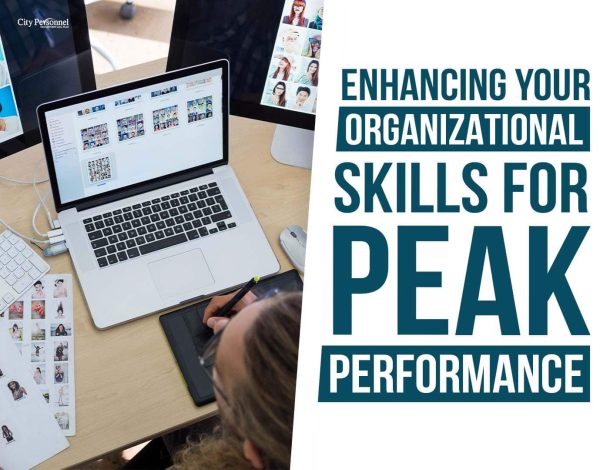In the fast-paced professional world, where deadlines loom large and demands come from every direction, the skill of organization can be the difference between floundering and flourishing.
Organizational skills are not only essential for managing tasks and time but also for reducing stress and boosting productivity. Mastering these skills empowers professionals to stay ahead and perform at their peak. If you’re ready to unlock your potential, read on to discover how to hone your organizational skills.
Why Organizational Skills Matter
At the core of organizational efficacy lies a trifecta of benefits – increased productivity, reduced stress levels, and improved time management. These outcomes are not mere buzzwords; they represent tangible results that can reshape how professionals approach their daily work lives.
Efficient systems for managing workflows ensure that no task falls through the cracks and that each receives the precise amount of attention and resources it requires. Streamlining your work environment and processes allows you to concentrate on high-impact activities that drive success, without the drag of disorganization impeding your progress.
Moreover, disorganization can be incredibly stressful. The constant worry about forgotten tasks or misplaced information creates a mental burden that can drain energy and cloud clarity of thought. By honing strong organizational skills, professionals can establish structured systems that provide peace of mind and a sense of control over their work, fostering a more serene and focused mindset.
Organizational techniques empower professionals to maximize their hours. With a clear understanding of priorities and deadlines, individuals can allocate time more effectively and steer clear of wasting valuable time on non-essential activities. Additionally, by knowing precisely where to locate the information or tools they need, professionals can eliminate time-consuming searches and interruptions, enhancing overall productivity.
Tips for Enhancing Organizational Skills
Becoming better at organization is not a one-size-fits-all endeavor. It involves the adoption of various techniques and tools, all of which can be tailored to suit individual preferences and job requirements. Here are some foundational strategies to jumpstart your organizational evolution.
1. Prioritization Techniques
From the Eisenhower Matrix to the ABC Method, various frameworks exist to help professionals rank their tasks by importance and urgency. By identifying the tasks that yield the most significant return on your time investment, you can ensure that your focus remains on activities that align with your professional goals.
Eisenhower Matrix:
The Eisenhower Matrix, also known as the Urgent-Important Matrix, is a decision-making framework popularized by former U.S. President Dwight D. Eisenhower. This tool categorizes tasks into four quadrants based on their urgency and importance:
- Important and Urgent (Quadrant 1): Tasks that are both important and require immediate attention. These are typically crisis situations or deadlines.
- Important but Not Urgent (Quadrant 2): Tasks that are important for long-term goals and success but do not require immediate action. This quadrant is where strategic planning, goal setting, and personal development activities belong.
- Urgent but Not Important (Quadrant 3): Tasks that seem urgent but do not contribute significantly to long-term goals. These tasks often distract from important work and can be delegated or minimized.
- Not Urgent and Not Important (Quadrant 4): Tasks that are neither urgent nor important. These tasks are time-wasters and should be minimized or eliminated from your schedule.
By using the Eisenhower Matrix, individuals can prioritize their tasks effectively, focus on what truly matters, and improve productivity by allocating time and energy efficiently.
ABC Method for Organization:
The ABC Method is a simple technique for organizing tasks based on priority. Tasks are categorized into three levels of importance:
- A Tasks: These are tasks that are crucial and have high priority. They are typically deadline-driven or contribute significantly to long-term goals and outcomes.
- B Tasks: These tasks are important but not as critical as A tasks. They require attention but can be managed after completing A tasks.
- C Tasks: These are tasks that are nice to do but not essential. They are often non-urgent and can be addressed once A and B tasks are completed.
By assigning priorities to tasks using the ABC Method, individuals can focus on high-impact activities, avoid procrastination, and ensure that important tasks are completed in a timely manner for optimal productivity and efficiency.
2. Effective Task Delegation
Even the most organized professionals can become overwhelmed if they try to shoulder an excessive workload. Learning how to delegate tasks to team members not only frees up time but also plays to everyone’s strengths, improving overall team performance.
3. Time-Blocking Strategies
Proactively allocating specific time blocks to dedicated tasks or types of activities can foster a deep work environment that minimizes multitasking and task-switching – both of which can detract from efficiency.
4. Digital Tools for Organization
The digital age offers an array of productivity apps and software designed to enhance your organizational prowess. Whether through the use of project management platforms, calendar apps, or note-taking software, finding digital tools that resonate with your work style is crucial to maintaining an organized approach.
Challenges and Solutions
Despite one’s best efforts, maintaining an organized work life is not without its challenges. Here are some common roadblocks and strategies for surmounting them.
Procrastination is often a symptom of disorganization – if a task feels too overwhelming, it’s easier to put it off. Combat this by breaking tasks into smaller, more manageable steps and using the ‘2-minute rule’ to tackle quick, actionable items immediately.
Additionally, in an era of constant connectivity, professionals must contend with unprecedented amounts of information. Develop habits for processing and managing this influx, such as regular digital decluttering or filtering out non-essential notifications.
Implementing Organizational Skills in the Workplace
The practical application of organizational skills is where the rubber meets the road. Here’s how to structure your work environment and routines for maximum organizational impact.
Your physical workspace should be optimized for efficiency and comfort. Invest time in arranging your desk, stationery, and storage solutions so that they support your workflow rather than become a hindrance.
Additionally, by incorporating organizational techniques into your daily routines, you can ensure that they become second nature. Whether it’s the way you start your day, the routines you follow before tackling a task, or the way you conclude your work, consistency will reinforce your organizational habits.
In a professional landscape where the demand for high performance is ceaseless, those who take their organizational skills seriously will stand out. By recognizing the importance of organization and diligently working to improve in this area, you’re setting yourself up for success. Start small, be consistent, and remember that the most effective organizational techniques are the ones that you’ll actually use. Now, go forth and organize your way to peak performance. Your future, much like your well-managed tasks, awaits.







